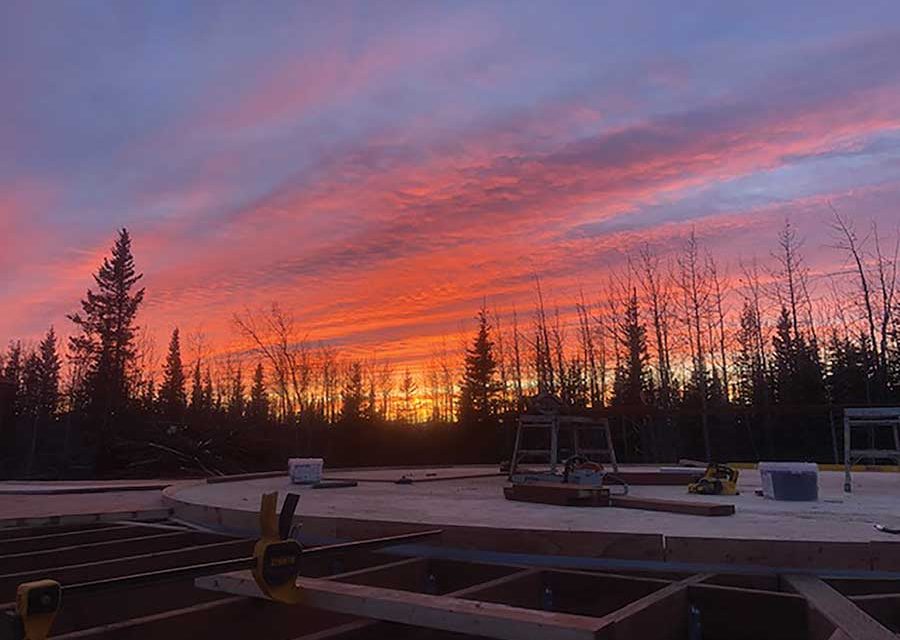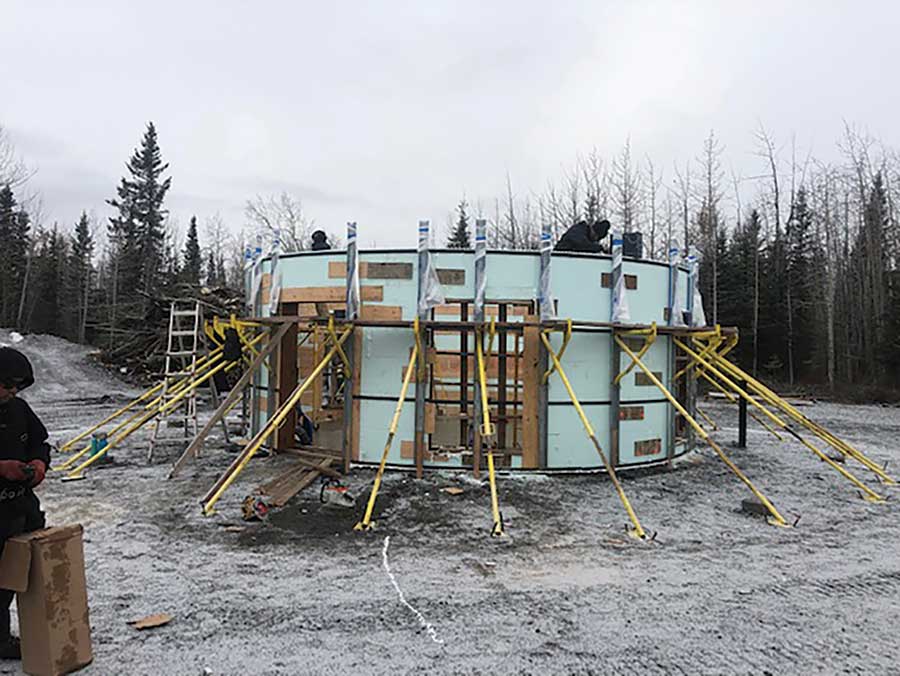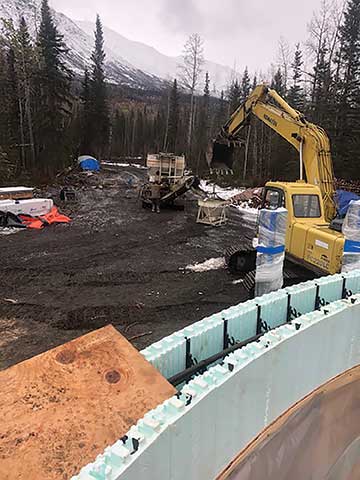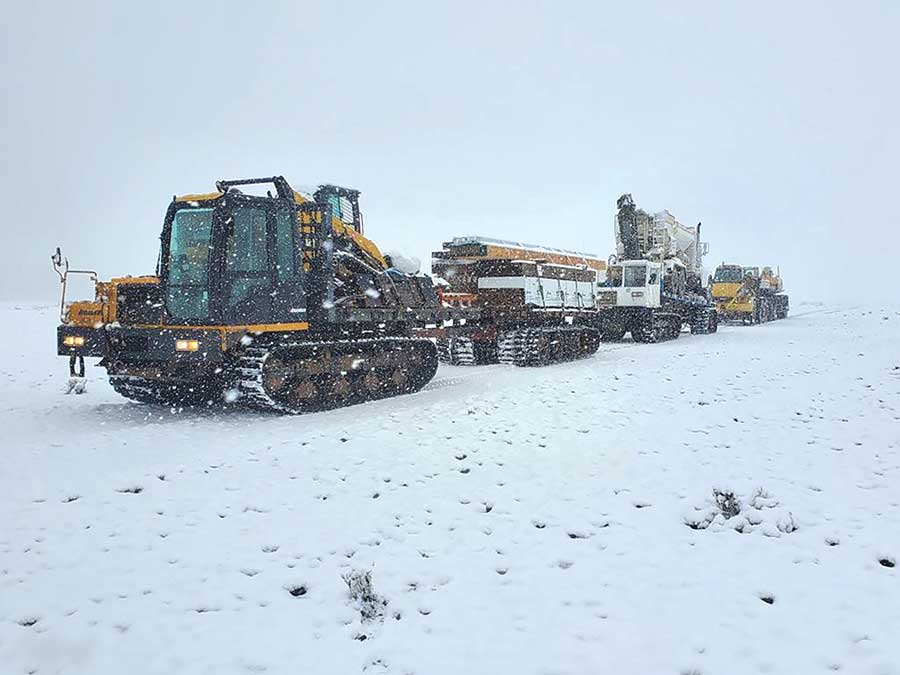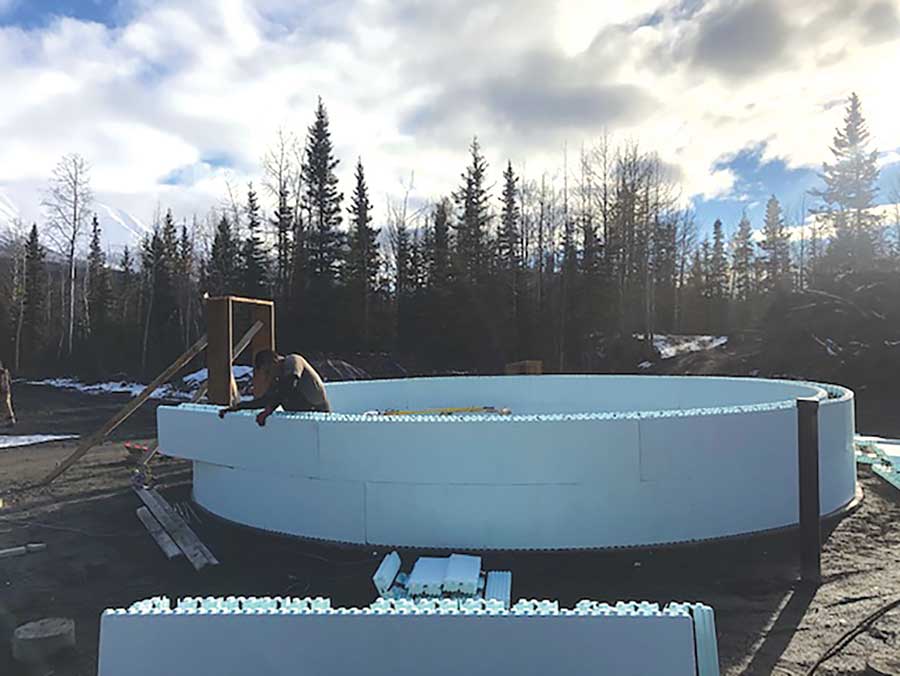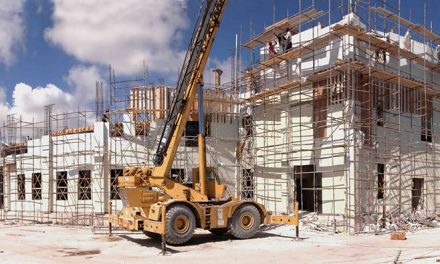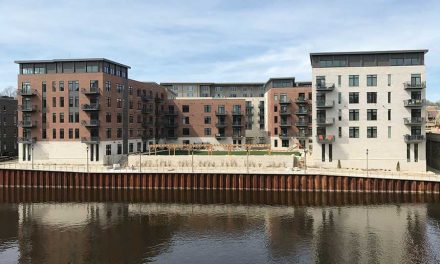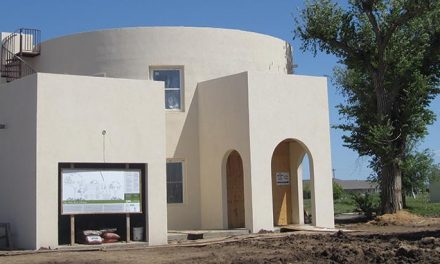By Vanessa Salvia
One ICF installer had a real challenge of a job. They needed to place a pad for a yurt in a spot with airplane access only, in remote Alaska. It took specialized rigs carrying loads up 10 miles of “road,” then 10 miles of glacial river with two river crossings. The job was completed in late October.
Yes, that’s the basic challenge of building in remote Alaska. Kaleb Rowland and his company, Rowcon Builders LLC, is the lucky builder. He gets views of the Nizina River and the Wrangell Mountains in south central Alaska. The owner, who is a pilot, naturally wants to keep this site private, because as Rowland says, “it’s a pretty special place and we all really like it there and we want it to stay that way.” Rowland says it’s such a special place, he bought some property nearby too, so he can keep enjoying it.
If Rowland’s name sounds familiar, it’s likely because the family has been profiled on the NatGeo television show Life Before Zero: Next Generation, which chronicles off-grid life in Alaska. Rowland says he started building with ICF at the tender age of 11 or 12, not that any age is “tender,” when you’re in remotest Alaska. He worked for his father all of his teenage years, and his father never built with anything but ICF.
“I always hated concrete when I was a kid,” Rowland says with a laugh. “And once I kind of became an adult and ventured out in the world I realized concrete is not too bad and I embraced the whole ICF building concept wholeheartedly.”
As a builder, Rowland only offers ICF foundations. Occasionally there’s some education that goes along with that, and some sticker shock, but he says people usually come to understand the advantages of ICF.
“ICF comes with a pretty steep price out here,” he says. “Concrete’s $400 a yard and we’re 300 miles from the nearest city. So freighting is obviously a concern. Unless they just flat don’t have the pockets for it, when I tell them ICF foundations are the only thing I’ll do the answer is yes.”
The property owner wanted to place a yurt on the site, and asked Rowland for help with a foundation. At first, Rowland said no. Then, he changed his mind, in part because he switched to building with Nudura blocks, which have easy-to-use radius forms.
“I said, ‘Let’s give this a shot,'” he said. “I gave him a price on it and he wasn’t scared off, so I did it.”
The yurt pedestal is a 9-foot wall for a 24-foot yurt, with an octagonal pressure-treated deck all the way around it. They got materials to the site using Morooka rubber track carriers that go about six miles an hour. “They usually come with a dump bed, but my dad converted them all to flatbeds and one’s got a turntable so he can haul a semi-trailer,” Rowland explains. “It’s about a 10-mile run on a really soft muddy road and then eight miles out on a river bar, with two river crossings that have to be made in order to get out there. The airplane we use for crew and tool transport and anything that would fit in the airplane. I think we had three Morooka loads. We also had a full load just to haul the concrete truck out there.”
Altogether, the work took Rowland four work weeks. He’s used to working in McCarthy, which is already remote by most people’s standards. “But this job took it up to a whole new level,” he says.
“I really liked the people out there and I liked the place,” he says. “It’s a pretty cool project. Backcountry Alaska in the middle of the Wrangells — that’s hard to beat.”

